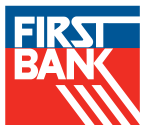
Continuing its fourth generation of family ownership, Michael Dierberg serves as Chairman of the Board at FB Corporation (First Bank).
Family-owned businesses in the United States are as common as hometown parades and pumpkin pie on Thanksgiving. Family-owned businesses, like the one where I work, represent 80-90% of all businesses, and generate between 40-60% of Gross Domestic Product (GDP). We exist in all shapes and sizes, from small corner stores to huge companies, with over $100 billion in revenue. We also face common opportunities and challenges that are different from publicly-traded companies, such as managing intra-family conflict, shareholder control, distributions, and engaging the next generation.
Yet, despite our ubiquity and common opportunities and challenges, far too many of us treat the issues we face as family-owned businesses as if we’re the only ones to confront those issues. Our isolation in addressing these challenges is reinforced by the lack of well-known resources regarding these topics. Many of you might be able to name several good books about how to be a great leader, but how many can name a good book about how to be a great family business owner? Both skills are necessary to be successful in the long-term as a family business, yet the latter skill is often neglected by business writers.
With this dearth of resources, family-businesses must turn to each other as the best resource for navigating these opportunities and challenges. As a fourth-generation leader of a family-owned company that happens to cater to family-owned and other privately held businesses, I’ve had the pleasure of getting to know many family-owned businesses and have learned a lot from them.
Below are just a few examples of things I have learned, including ideas about how to better connect with other families facing similar challenges.
Preserve the family’s legacy and stories. Preserving and sharing the family’s legacy, including how the company was founded and its subsequent journey, can help unify family members and employees around a common link. This can also be a way of reinforcing important values.
Share your passion and excitement with the next generation. Make sure the kids hear good things about the family business, not just the challenges and headaches. It’s often easy to unload at the dinner table about all of the bad things that happened at the office or conflicts with other family members. If that is all the children hear, it should not be surprising if later in life they show little interest in the family business. Make sure that they hear the good side of it as well. Better yet, find fun ways for them to be actively involved in things going on at the company.
Engage the next generation with the philanthropic work you and the company do. Let them see not only that the family business is a source of income for the family, but also can benefit the community in a major way. Depending on their age, get them involved with the charities you support or even ask them to provide input with respect to the family’s giving. This should not only get them more connected to the business in a positive way, but also foster a life-long passion for giving back.
Connect with peers. One of the most important things I’ve learned from other family businesses is how to connect with other family businesses. Of course, you can draw on the connections you’ve built over the years with friends who are family business owners, but there are also more formal ways to connect and get to know other family-businesses. National organizations, like Young President’s Organization (YPO), Entrepreneurs' Organization (EO), and Tugboat Institute , while not focused specifically on family-owned businesses, often provide a way of connecting to other family business leaders. There are also national organizations, such as the Family Business Network, that host conferences, provide webinars, and generate other content directly geared toward family businesses. In your community, there may be local organizations that provide opportunities to learn from other family-businesses. For example, in the Midwest, a new program called the Business of Family Business Ownership is specifically designed to develop the next generation of family members to be effective owners and board members, in part through interaction with similarly situated family businesses.
However you elect to connect to other family-businesses, you can gain a lot by that interaction.


